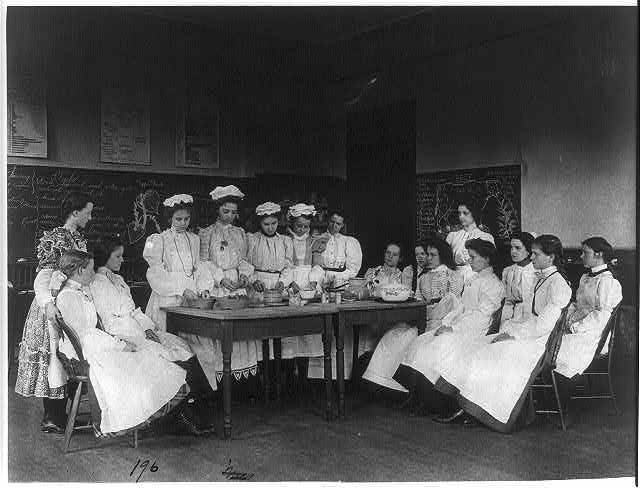
There is a long-standing debate on how economics as a subject is gender blind giving rise to various branches within the subject that seek to address ‘the woman question’ (as early feminism has been labeled) within the discipline. Giandomenica Becchio’s book A History of Feminist and Gender Economics is not merely an attempt to understand the history of economics and how the various dimensions of ‘the woman question’ have entered the discipline of economics over the years. The book also explores the work of women economists who mostly remained unheard in the discipline, the women who struggled to enter into the academic realm and the debates within these economists about addressing ‘the woman question’.
The emergence of gender economics and feminist economics
Becchio makes a nuanced attempt to highlight the difference between gender economics and feminist economics. The distinction between the two is not merely a nominal one and can be understood from the emergence of gender studies within social science. While gender economics cope with issues of gender from a neoclassical perspective, feminist economics take a heterodox understanding of gender issues (p. 182). It is interesting to highlight that the American Economic Association recognized gender economics as a subfield of labour economics in 1990 and feminist economics as a heterodox economics in 2006.
The book makes real attempts in capturing the various tenets of the relationship between the discipline of economics and the feminist movement and how the various waves of the feminist movement have shaped economics as we know it. Social movements make social science what it is; no discipline can be entirely isolated from a changing world order. This becomes especially important to highlight at a time like this when economics has increasingly been accused of racism or being racially blind.
The book discusses the development of ‘the woman question’ chronologically, starting with its relationship to political economy in the 19th century in different societies in Great Britain, German and Austria, and the United States of America. The societies are selected to highlight the role of political ideology in handling the women’s question, how different political ideologies have led to the entry of women into academia and how they have shaped ‘the woman question’ within the discipline. The intersectionality of ‘the woman question’ with minority identities is also explored in the book, for example through the women activists of Austria and Germany that belonged to the Jewish middle class. This shows how women’s emancipation is not merely constrained to their gender identities but gets further entangled along with their other social identities and the political economy. For example, education was seen as a battleground for middle-class Jews to gain reputation as citizens. For women, education was seen to be the first path for emancipation. So, when the University of Vienna opened its door to female students in 1897, as many as 60% of the women enrolled were of Jewish identity making the process of women’s emancipation even more dynamic (Chapter 1).
The centrality of feminist movements for the development of the field
Becchio explains that it is necessary to understand early feminism and the feminist movement to better understand the origins and development of both feminist and gender economics. The book also pays considerable attention to home economics and how it played the dual role of both contributing to women’s emancipation and normalizing gender roles. On the one hand, home economics gave women economists a chance to pursue a professional career and become financially independent. At the same time, it separated the women economists from their male counterparts, creating a discipline which propagated the traditional role of women in society (Chapter 2). The absence of male economists in home economics made it a ‘pink ghetto’. Still, its role in stimulating the emergence of women economists, gender economics and feminist economics is immense.
The book also considers the present status of women within the discipline of economics, how the present models of gender in neoclassical economics and feminist economics have evolved over the years, how the journals of the discipline have been shaped, the various debates within the field and how the various international organizations calculate gender inequality. The gender gap within the discipline is quite stark – “according to the latest annual Committee on the Status of Minority Groups in the Economics Profession Report (2018), in only one-third (380) of the 1,150 PhD degrees in economics achieved in the United States had been awarded to women in 2016-17. Minority women were the recipients of a mere 5.1% of all economics degrees conferred in 2017” (Chapter 4) (p. 202).
However, the book fails to take account of women economists and the history of economics outside the political domains of Europe and North America. While the changing political economy of Europe and North America did play a role in shaping the discipline of economics, it is also important to understand that several African and Asian countries were also going through a political transformation during the same time. The history of economics is incomplete without taking into account the political history of these emerging and newly independent countries. Hence, the history of gender economics and feminist economics also become incomplete without taking into account the politcal situation of the Global South. Nevertheless, the book highlights the various case studies of women economists of the three regions it focuses on, their work which mostly get hidden in the mainstream, their debates with their contemporaries and their diversion from the past models. The book becomes immensely relevant in understanding the history of gender economics and feminist economics and how economics has been shaped by history.
Ritwika Patgiri is a PhD Research Scholar at the Faculty of Economics, South Asian University, New Delhi. She tweets at @RitwikaPatgiri. Photo: A home economics class in 1899 by Frances Benjamin Johnston.